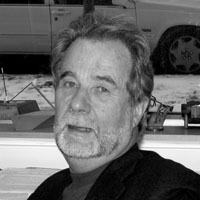NIH Award from the National Institute of General Medical Sciences
Time-Resolved Macromolecular Crystallography
- Principal Investigator: John (Keith) Moffat, PhD, Professor, Biochemistry & Molecular Biophysics, Deputy Provost for Research, Institute for Biophysical Dynamics, CARS (Consortium for Advanced Radiation Sources)
- Start Date: April 1, 2010
- Total Award Amount: $105,409
Public Health Relevance
Many cancers are associated with derangement of signal transduction pathways, driven by ligand binding to chemoreceptors. The pathways may be known but the mechanisms at the molecular level are not. The natural and artificial photoreceptors whose molecular mechanisms we study have parallels to, but also key differences from, chemoreceptors: the thermodynamic and structural principles of signal transduction are likely to be similar in both.
Project Description
Our understanding of reaction mechanisms in biological systems at the molecular level is presently based largely on knowledge of static, chemically- or physically-trapped structures obtained by high resolution X-ray crystallographic and NMR techniques. However, the dynamic aspects of changes in structure are critical in all chemical and biological processes, for example catalysis, ligand binding and release, and signal transduction.
To explore the mechanisms of signal transduction, we have successfully conducted time-resolved crystallographic experiments with ~100 picosecond time resolution and high crystallographic resolution on light-sensitive systems, identified the structures of short-lived intermediates and characterized the overall mechanism of light-dependent signal transduction which these intermediates populate. Recently, we have determined the static crystal structures of several novel, naturally-occurring, signaling photoreceptors which are based on a modular architecture. Those containing so-called LOV or BLUF sensor domains respond to blue light, and bacteriophytochromes containing PAS-GAF-PHY domains to red/far-red light.
We will now conduct time-resolved crystallographic experiments on these proteins, and on longer constructs that contain both sensor and effector (output) domains. We address the questions: How is a signal generated and transmitted? How is activity controlled by light? In each, what is the mechanism of light-dependent signal transduction? Despite the high chemical and structural diversity in natural photoreceptors, we believe that general principles of signal transduction exist. Indeed, we have prepared chimeric, artificial photoreceptors in which we have made light-sensitive a normally light-inert biological activity e.g. histidine kinase or DNA binding. We will explore these artificial photoreceptors to test and expand our general principles, afford useful tools and offer new targets for crystallization. Finally, artificial photoreceptors overcome a limitation of time-resolved crystallography: many interesting systems are not light-dependent. We will pursue the question: How general are these approaches?
This award is funded under the American Recovery and Reinvestment Act of 2009, NIH Award number: 3R01GM036452-25S1.

Keith Moffat, PhD,
Professor, Biochemistry & Molecular Biophysics, Deputy Provost for Research, Institute for Biophysical Dynamics, CARS (Consortium for Advanced Radiation Sources)
